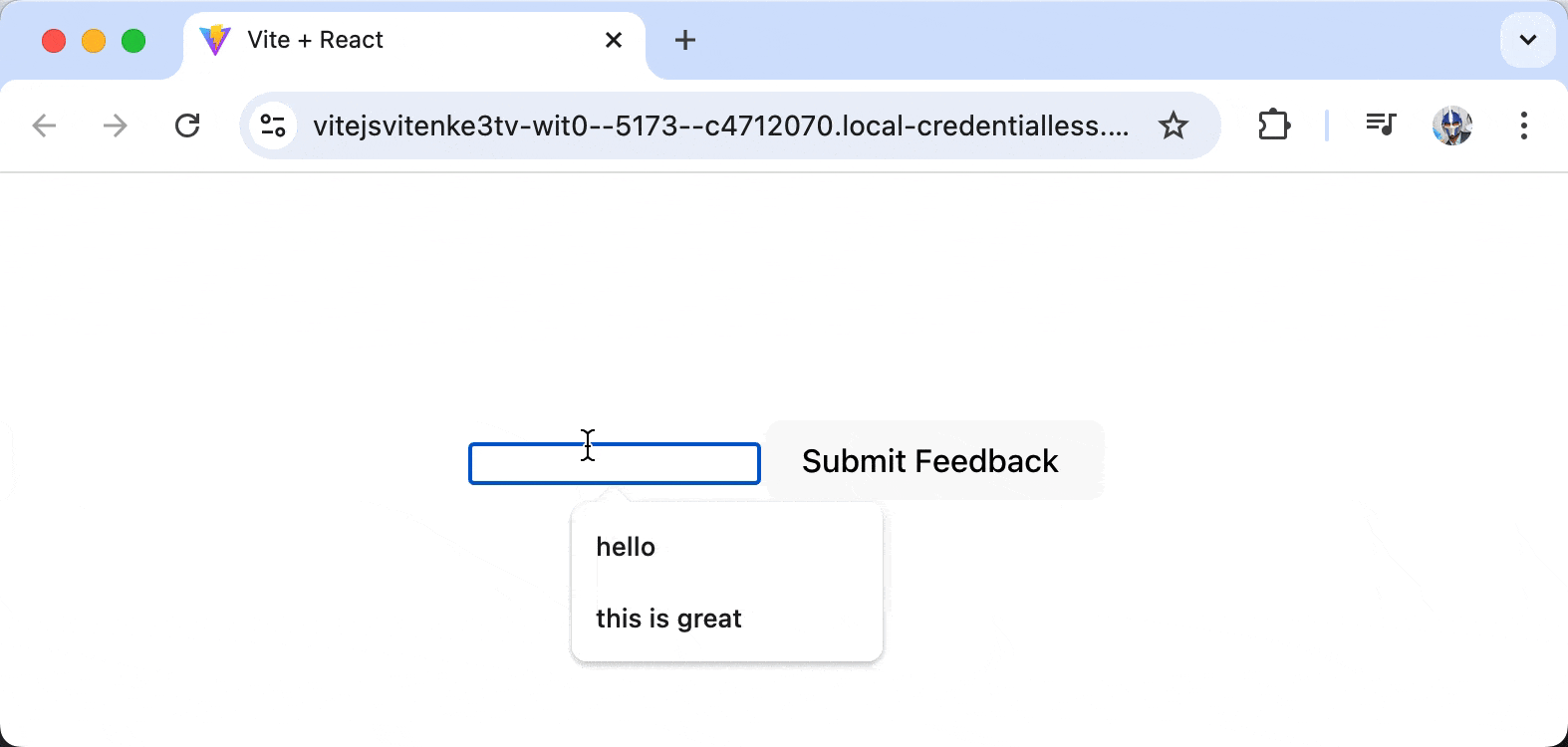The Guide to New Hooks in React 19

Take a look at the useActionState, useFormStatus and useOptimistic Hooks, new in React 19.
React 19 has recently emerged as a powerful evolution in the React ecosystem, bringing with it a suite of new React Hooks designed to simplify state management, enhance asynchronous operations and optimize performance. In this guide, we’ll dive deep into these new additions: useActionState, useFormStatus and useOptimistic.
useActionState: Simplifying Form Handling
One of the most notable additions in React 19 is the useActionState Hook, a powerful tool that simplifies the often repetitive task of managing form state and asynchronous updates. In earlier versions of React, developers typically had to juggle multiple useState calls to manage form data, loading states and errors. The useActionState Hook abstracts these concerns into a single, cohesive API.
Understanding useActionState
The useActionState Hook is designed to handle the entire lifecycle of a form action, from triggering the action to managing the form’s state during and after the submission. It takes three parameters:
- An action function: The function called when the form action is triggered. It’s responsible for processing the form data and returning the updated state.
- An initial state object: An object that defines the initial state of the form, typically containing default values or placeholders for data and error messages.
- A permalink (Optional): A unique page URL that can be modified by the form, useful for handling dynamic routing or updating the browser’s address bar.
The useActionState Hook returns a tuple with three elements:
- Form state: The current state of the form, which updates based on the action function’s output.
- Dispatch function: A function that triggers the form action when the form is submitted.
- Pending state: A boolean indicating whether the action is currently in progress.
import { useActionState } from "react";
export function Component() {
const [state, dispatch, isPending] =
useActionState(
action,
initialState,
permalink,
);
// ...
}
Example: A Feedback Form
Let’s walk through a practical example to illustrate how useActionState can be applied in a real-world scenario. Assume we wanted to build a simple feedback form that allows users to submit feedback asynchronously.
import { useActionState } from "react";
export function FeedbackForm() {
// ...
}
To begin building our feedback form, we’ll first define the action function that will handle the form submission. This function is central to the useActionState Hook, as it manages the core logic for processing the form data and determining what state should be returned based on the success or failure of the submission.
Before we do that, we’ll simulate an API call using a simple function named submitToAPI(). This function mimics the behavior of sending form data to a server, which, in real-world applications, might involve making a Fetch or Axios call to an external endpoint.
const submitToAPI = async (formData) => {
// Simulating an API call
await new Promise((resolve) =>
setTimeout(resolve, 1000),
);
return `Submitted: ${formData.get("text")}`;
};
The submitToAPI() function accepts a formData, a FormData object, and processes it asynchronously by simulating a network delay, and then returns a success message. This return value will be used to update the form’s state after submission.
Next, we define the action function itself. The action function is responsible for handling the logic that occurs when the form is submitted. It’s where we’ll call submitToAPI() and manage the different outcomes—whether the submission is successful or fails due to an error.
const submitToAPI = async (formData) => {
// Simulating an API call
await new Promise((resolve) => setTimeout(resolve, 1000));
return `Submitted: ${formData.get('text')}`;
};
const action = async (currentState, formData) => {
try {
const result = await submitToAPI(formData);
return { message: result, error: null };
} catch (error) {
return { message: null, error: "Failed to submit form" };
}
};
In the above action function, we’re handling two primary scenarios. If the submitToAPI call is successful, the function returns an object containing the success message and a null value for the error.
Conversely, if an error occurs during the submission (perhaps due to a network issue or server error), the function returns an object with a null message and an appropriate error message. This design allows the form component to react accordingly, displaying either a success message or an error message to the user.
Now that we have our action function and API simulation in place, it’s time to integrate everything into our form component using useActionState. The Hook will take our action function and an initial state object and handle the form’s state management throughout its lifecycle.
import { useActionState } from "react";
const submitToAPI = async (formData) => {
// Simulating an API call
await new Promise((resolve) => setTimeout(resolve, 1000));
return `Submitted: ${formData.get('text')}`;
};
const action = async (currentState, formData) => {
try {
const result = await submitToAPI(formData);
return { message: result, error: null };
} catch (error) {
return { message: null, error: "Failed to submit form" };
}
};
export function FeedbackForm() {
const [state, dispatch, isPending] = useActionState(
action,
{ message: null, error: null }
);
return (
<form action={dispatch}>
<input type="text" name="text" disabled={isPending} />
<button type="submit" disabled={isPending}>
{isPending ? 'Submitting...' : 'Submit Feedback'}
</button>
{state.message && <p className="success">{state.message}</p>}
{state.error && <p className="error">{state.error}</p>}
</form>
);
}
Here’s a breakdown of what happens within the FeedbackForm component:
State Management with useActionState: We initialize the Hook with the
actionfunction and an initial state object that includes placeholders formessageanderror. This setup prepares the form to handle both success and error states, depending on the outcome of the submission.Form Submission with dispatch: The
dispatchfunction, returned byuseActionState, is assigned to the form’sactionattribute. When the user submits the form,dispatchtriggers theactionfunction, initiating the form submission process.Handling the pending state: The
isPendingboolean indicates whether the form is currently in the process of submitting data. IfisPendingistrue, the form inputs and the submit button are disabled, preventing the user from making additionaluseActionStatesubmissions or interacting with the form until the current action is completed. This provides a smoother user experience and prevents potential issues from multiple submissions.Displaying feedback: After the form is submitted, the component checks the
stateobject for either a success message or an error message. If a message is present, it is displayed to the user. If there’s an error, the error message is shown instead. This dynamic feedback mechanism keeps users always informed about the status of their submission, whether it succeeded or failed.
With these changes, here’s how our app appears when data is submitted successfully in the FeedbackForm component.

Benefits of useActionState
- Simplified state management: By consolidating form state, loading state and error handling into a single Hook,
useActionStatedrastically reduces the complexity of managing forms in React. - Built-in async handling: The Hook natively supports asynchronous actions, automatically managing the transition between pending, success and error states.
- Automatic UI updates: The UI is automatically updated based on the form state, eliminating the need for manual DOM manipulation or additional logic to handle state changes.
useFormStatus: Accessing Form State in Nested Components
Another valuable addition in React 19 is the useFormStatus Hook, which allows nested child components to access information about their parent form without relying on prop drilling or context. This is particularly useful in complex forms where different components need to respond to the form’s submission status or data.
In many complex forms, different sections or fields are often managed by their own components. For instance, you might have a form where personal information, billing details and shipping addresses are each managed by distinct components. Managing the form’s overall state, such as whether it is currently submitting or whether there’s an error, can become cumbersome when this state needs to be passed down through multiple layers of components.
This is where useFormStatus shines. It allows any component within the form hierarchy to easily access and respond to the form’s current state, such as whether the form is pending submission, has encountered an error or has been successfully submitted.
Understanding useFormStatus
The useFormStatus Hook does not take any parameters and returns an object containing the following properties:
- pending: A boolean that indicates whether the form is currently in the process of being submitted.
- data: The form data that is being submitted, accessible to any component that needs to display or manipulate this information.
- method: The HTTP method used for the form submission, typically
POSTorGET. - action: The form’s action URL, which defines where the form data is sent.
import { useFormStatus } from "react";
export function NestedComponent() {
/* access form information */
const { pending, data, method, action } = useFormStatus();
return (
/* template */
);
}
Example: A Nested Submit Button
Let’s explore how useFormStatus can be used in a nested component to enhance a form’s functionality.
import { useFormStatus } from "react";
function SubmitButton() {
const { pending, data } = useFormStatus();
return (
<button type="submit" disabled={pending}>
{pending ? "Submitting..." : "Submit"}
{data && (
<span className="data-preview">
{data.get("text")}
</span>
)}
</button>
);
}
export function FeedbackForm() {
return (
<form action="/submit-feedback">
<input type="text" name="text" />
<SubmitButton />
</form>
);
}
In the above example, the SubmitButton component accesses the form’s status using useFormStatus. It automatically disables itself when the form is in the process of being submitted (pending state) and can display a preview of the data being submitted. This allows for a more dynamic and responsive user interface, where nested components can independently respond to changes in the form’s state.
Advantages of useFormStatus
- Reduced prop drilling: By accessing form state directly from the
useFormStatusHook, we eliminate the need to pass props through multiple component layers, simplifying your component structure. - Improved modularity: Form-related components become more self-contained and reusable, as they no longer depend on external props for state management.
- Real-time updates: Components that use
useFormStatusautomatically re-render when the form’s status changes, ensuring the UI always reflects the current state of the form.
useOptimistic: Enhancing User Experience with Optimistic Updates
Optimistic updates are a powerful technique in web development that can significantly improve the perceived performance and responsiveness of your application. React 19’s useOptimistic Hook provides a simple yet effective way to implement optimistic updates, allowing you to update the UI immediately while a background operation, such as a network request, is still ongoing.
Understanding useOptimistic
The useOptimistic Hook is designed to handle scenarios where you want to display an immediate UI update before an operation is fully completed. It takes two arguments:
- Current value: The current value of the state you want to manage optimistically.
- Optimistic update function: A function that computes the optimistic value based on the current state and the new data.
The Hook returns an array with two elements:
- Optimistic value: The value that should be displayed optimistically in the UI.
- Setter function: A function to update the optimistic value, which is typically called before the actual state update occurs.
import { useOptimistic } from "react";
export function Component() {
const [optValue, setOptValue] = useOptimistic(
currentValue,
optUpdateFunction,
);
return (
/* template */
);
}
Example: A Todo List with Optimistic Updates
First, let’s implement a basic todo list without using the useOptimistic Hook. In this version, a new todo item will appear only after the API call is completed.
import { useState } from "react";
const addTodoToAPI = async (todo) => {
// Simulating an API call
await new Promise((resolve) => setTimeout(resolve, 1000));
return { id: Date.now(), text: todo };
};
export function TodoList() {
const [todos, setTodos] = useState([]);
const addTodo = async (formData) => {
const todo = formData.get("todo");
const newTodo = await addTodoToAPI(todo);
setTodos((currentTodos) => [...currentTodos, newTodo]);
};
return (
<div>
<form action={addTodo}>
<input type="text" name="todo" />
<button type="submit">Add Todo</button>
</form>
<ul>
{todos.map((todo) => (
<li key={todo.id}>{todo.text}</li>
))}
</ul>
</div>
);
}
In the above implementation, the todo list component uses the useState Hook to manage the list of todos and an addTodo() function to handle the form submission. When the form is submitted, the addTodoToAPI() function simulates an API call to add the todo item. After the API call is completed, the new todo item is added to the state, and the UI is updated to reflect the change. This approach ensures that the new todo item is only displayed after the API call is successful, providing a reliable, albeit slightly delayed, user experience.
Now, we’ll enhance the todo list by using the useOptimistic Hook to provide immediate feedback when a new todo item is added.
import { useOptimistic, useState } from "react";
const addTodoToAPI = async (todo) => {
// Simulating an API call
await new Promise((resolve) =>
setTimeout(resolve, 1000),
);
return { id: Date.now(), text: todo };
};
export function TodoList() {
const [todos, setTodos] = useState([]);
const [optimisticTodos, addOptimisticTodo] =
useOptimistic(
todos,
(currentTodos, newTodo) => [
...currentTodos,
{
id: "temp",
text: newTodo,
pending: true,
},
],
);
const addTodo = async (formData) => {
const todo = formData.get("todo");
addOptimisticTodo(todo);
const newTodo = await addTodoToAPI(todo);
setTodos((currentTodos) => [
...currentTodos,
newTodo,
]);
};
return (
<div>
<form action={addTodo}>
<input type="text" name="todo" />
<button type="submit">Add Todo</button>
</form>
<ul>
{optimisticTodos.map((todo) => (
<li
key={todo.id}
style={{
opacity: todo.pending ? 0.5 : 1,
}}
>
{todo.text}
</li>
))}
</ul>
</div>
);
}
In this enhanced version, the useOptimistic Hook allows the TodoList component to display new todo items immediately after the user submits the form, even before the API call completes. The addOptimisticTodo() function adds a temporary, “optimistic” todo item to the list with reduced opacity to indicate that the addition is pending. Once the API call completes successfully, the actual todo item replaces the optimistic one, and the UI is updated accordingly.
This approach provides a smoother and more responsive user experience by allowing users to see their actions reflected in the UI immediately.
Benefits of useOptimistic
- Improved perceived performance: By providing immediate feedback,
useOptimisticenhances the responsiveness of the application, making it feel faster and more fluid to the user. - Better user experience: Users don’t have to wait for server responses to see the results of their actions, leading to a smoother and more engaging interaction with the application.
- Graceful fallback: If the optimistic update fails (e.g., due to a network error), React automatically reverts to the actual state, so the UI remains consistent with the application’s data.
Wrap-up
React 19 introduces a suite of powerful new Hooks that significantly enhance the developer experience, particularly in managing state, form handling and UI updates.
The useActionState Hook streamlines form state management by consolidating multiple state updates into a single, easy-to-use API. This not only simplifies your code but also improves the user experience by providing seamless form submissions with built-in async handling and automatic UI updates.
The useFormStatus Hook is helpful for complex forms, allowing child components to access and respond to the form’s state without the need for cumbersome prop drilling. This results in more modular and reusable components, making it easier to build and maintain large-scale forms in your applications.
Finally, the useOptimistic Hook brings the power of optimistic UI updates by allowing us to update the UI immediately while background operations are still in progress.
For a deep-dive into a new React 19 API that isn’t a Hook, check out this article on the
use()API—React Context with the New Use API.
Whether you’re managing complex forms, optimizing user interactions or just looking to improve the maintainability of your React components, these new additions to React 19 will become indispensable tools in our development arsenal. For more details, be sure to check out the section “What’s new in React 19” in the official React documentation.

Hassan Djirdeh
Hassan is a senior frontend engineer and has helped build large production applications at-scale at organizations like Doordash, Instacart and Shopify. Hassan is also a published author and course instructor where he’s helped thousands of students learn in-depth frontend engineering skills like React, Vue, TypeScript, and GraphQL.

